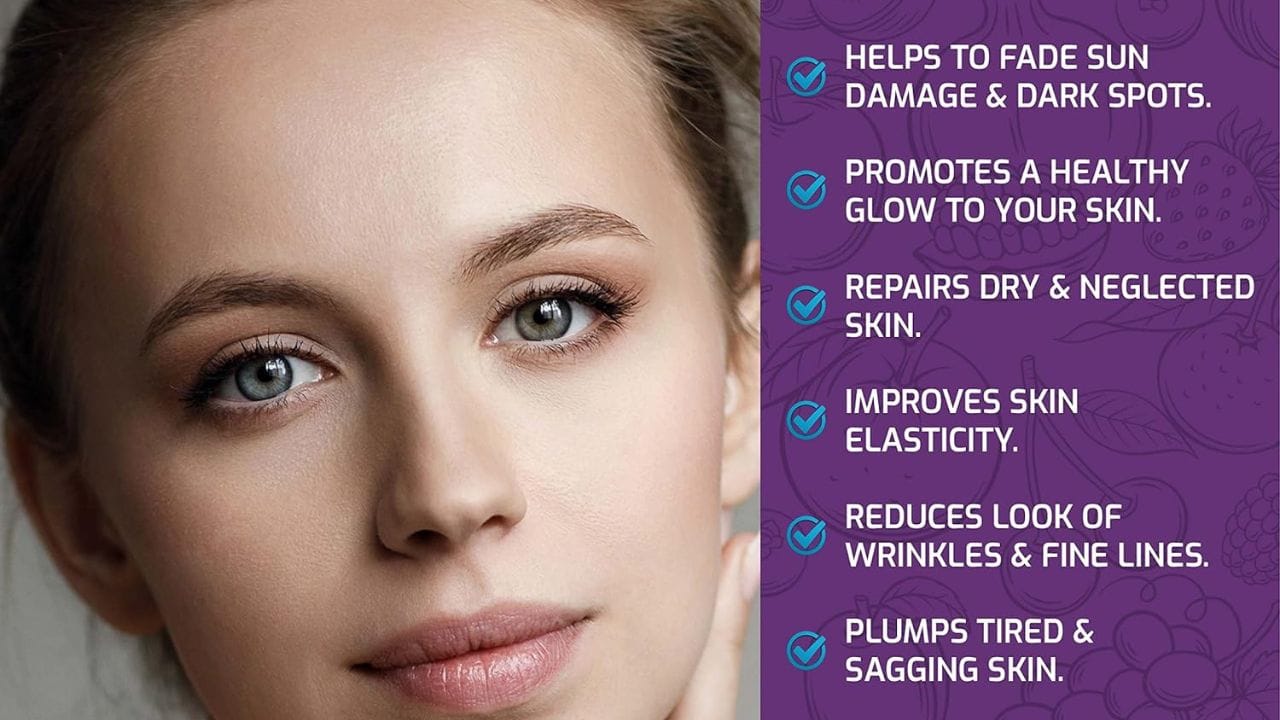Unveiling the Synergy: Can Peptide Serum Harmonize with Your Anti-Aging Routine?
Maximize the potential of your anti-aging ritual and let your radiant, youthful glow take center stage!

Key Takeaways:
- Understand the role of peptide serum in anti-aging skincare and its compatibility with other products.
- Learn how to effectively incorporate peptide serum into your existing skincare regimen.
- Discover the benefits and precautions of using peptide serum alongside other anti-aging treatments.
The quest for the fountain of youth often leads us down the aisles of skincare products, each promising to turn back the hands of time. Among these, peptide serums have emerged as a potent ally in the anti-aging battle. But can these powerful potions be mixed with other anti-aging products? Let's dive into the details and find out.
The Power of Peptides: What Are They?
Peptides are short chains of amino acids that serve as the building blocks of proteins such as collagen, elastin, and keratin. These proteins are the foundation of your skin's structure, providing it with firmness, elasticity, and resilience. As we age, our bodies produce fewer peptides, leading to a decrease in these vital proteins and, consequently, the appearance of wrinkles and sagging skin.
Peptide serums are formulated to penetrate the skin's surface, signaling the body to ramp up its production of collagen and elastin. This can result in a more youthful complexion, with improved texture and reduced signs of aging. But the question remains: can you add peptide serum to your skincare cocktail?
Layering Your Skincare: A Strategic Approach
When it comes to layering skincare products, the general rule of thumb is to apply them from thinnest to thickest consistency. Peptide serums are typically lightweight and should be applied after cleansing and toning but before heavier creams and oils. This allows the peptides to absorb directly into the skin without any barriers.
It's also important to consider the pH levels of the products you're combining. Peptides thrive in a slightly acidic environment, so using a toner with a low pH before applying your peptide serum can enhance its efficacy. However, be cautious not to use products that are too acidic, as they can disrupt the skin's barrier and cause irritation.
The Vitamin A Debate: Retinoids and Peptides
Retinoids, derivatives of vitamin A, are another heavyweight in the anti-aging category. They are known for their ability to accelerate cell turnover and stimulate collagen production. But can they be used with peptide serums? The answer is yes, with a caveat.
While both retinoids and peptides can coexist in a skincare routine, they should not be applied at the same time. Retinoids are best used at night, as they can make the skin more sensitive to sunlight. Peptide serums, on the other hand, can be used both morning and night. To avoid potential irritation, apply your peptide serum in the morning and your retinoid product at night.
Antioxidants and Peptides: A Perfect Pair
Antioxidants like vitamin C are crucial in protecting the skin from free radical damage, which can accelerate aging. When used with peptide serums, they can form a dynamic duo. Vitamin C helps to stabilize the peptides, allowing them to work more effectively, while also providing its own anti-aging benefits.
However, not all forms of vitamin C are created equal. Look for stable derivatives like magnesium ascorbyl phosphate, which is less likely to irritate the skin and can be used alongside peptides without compromising their integrity.
Hyaluronic Acid: The Hydration Hero
Hyaluronic acid is a moisture-binding ingredient that can hold up to 1000 times its weight in water. It's a fantastic complement to peptide serums, as it can help to plump the skin and reduce the appearance of fine lines and wrinkles.
When using hyaluronic acid with peptide serums, apply the serum first, then follow up with a hyaluronic acid product. This sequence ensures that the peptides are absorbed while the hyaluronic acid locks in moisture, creating a hydrated and smooth canvas.
Sunscreen: Non-Negotiable in Anti-Aging
No anti-aging routine is complete without sunscreen. It's the ultimate preventative measure against premature aging caused by UV radiation. When using peptide serums, it's especially important to protect your skin with a broad-spectrum SPF of 30 or higher, as peptides can make your skin more susceptible to sun damage.
Apply your sunscreen as the final step in your morning skincare routine, after your peptide serum and any other moisturizers. This ensures that your skin is shielded from the sun's harmful rays while benefiting from the anti-aging properties of your other products.
Exfoliants and Peptides: Proceed with Caution
Exfoliants like alpha hydroxy acids (AHAs) and beta hydroxy acids (BHAs) can enhance the penetration of peptide serums by removing dead skin cells. However, they can also lead to irritation if not used carefully.
To safely incorporate exfoliants with peptide serums, use them on alternate days or at different times of the day. For example, exfoliate in the evening and apply your peptide serum in the morning. This minimizes the risk of irritation while allowing both products to work effectively.
Niacinamide: A Compatible Companion
Niacinamide, also known as vitamin B3, is a versatile ingredient that can improve skin texture, reduce inflammation, and strengthen the skin barrier. It's generally well-tolerated and can be used with peptide serums without any issues.
In fact, niacinamide can actually enhance the effectiveness of peptides by boosting the skin's resilience and providing a stable environment for the peptides to work their magic. Apply your peptide serum first, followed by a niacinamide-containing product for optimal results.
Peptides and Growth Factors: The Advanced Alliance
Growth factors are another category of ingredients that promote cellular growth and repair. When used with peptide serums, they can amplify anti-aging effects by further stimulating collagen and elastin production.
It's important to use these potent ingredients as directed and to introduce them gradually into your routine to assess your skin's tolerance. Start by using growth factors or peptide serums alone, and if your skin responds well, you can begin to layer them, allowing time for each to absorb before applying the next.
Summary
Peptide serums can be a valuable addition to your anti-aging arsenal, and yes, they can be used in conjunction with other products. The key is to layer correctly, introduce new products gradually, and be mindful of potential irritants.
So click the button below to see what Peptide Serums that we have selected just for you so that you can create a harmonious and effective anti-aging skincare routine that leverages the benefits of peptide serums alongside your other favorite products!

